What does origin mean in math?
Origin means the point where anything starts or is simply the starting point. In math, origin, denoted as O, refers to the point of reference in geometry for other points in a plane. The value of origin in math is always 0. However, its representation depends on the plane to which it is being referred to. Let us understand origin with respect to the following-
1. Origin on a Number Line
2. Origin in Two-Dimensional Coordinate System
3. Origin in Three-Dimensional Coordinate System
Origin on a Number Line
In order to understand the origin on a number line, it is important to recall what we mean by the number line and how it is used in mathematics.
What is a number line?
A number line is a horizontal line which has numbers, both positive and negative placed at definite intervals. Various mathematical operations such as addition, multiplication division and subtraction can be performed on the number line. As we move from left towards right on a number line, the value of the numbers increases. This means, that the numbers of a number line are represented as . . . . . . -4, -3, -2, -1, 0, 1, 2, 3, . . . . . .
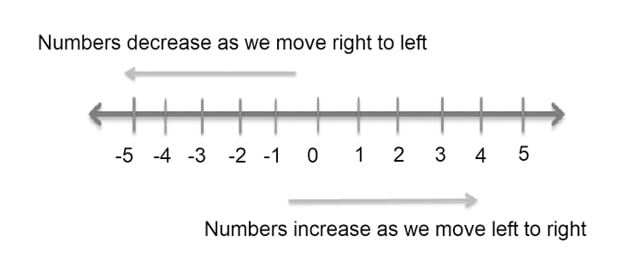
Check Our What is orientation in math?
Notice the number 0 on the number line that lies between the positive and the negative numbers. The number 0 is the origin on the number line.
Origin in Two-Dimensional Coordinate System
An important part of understanding what does origin mean in math is a graph. A graph represents a Cartesian coordinate system which is a system centred on two perpendicular lines, which we call the x-axis and the y-axis. The origin in the Cartesian coordinate system is the intersection of the x-axis and the y-axis.
Let us understand it through a graphical representation of the coordinate system. For this purpose, let us have two mutually perpendicular lines, say X ‘ O X and Y ‘ O Y. These two lines will intersect each other at a point, say O. This point O is called the origin. Below we have a graphical representation of the axis and their intersection at the origin.

Check Our What does period mean in math?
What is the value of origin on a graph?
From the above, we have understood what does origin mean in math and that the origin is located at the intersection of the x-axis and the y-axis. If we look carefully, at this intersection, x = 0 and y = 0. This point is written as a point ( 0, 0 ) where the value of the point in reference to the x-axis is placed first followed by the value of the point on the y-axis. This means that in a two-dimensional coordinate system the origin is the point O (0, 0). Hence, in a two-dimensional system, the origin represents the point where both x and y are 0.
Now, what about the three-dimensional coordinate system? Is the origin the same in this system or do we have different rules to represent it? Let us find out.
Origin in Three-Dimensional Coordinate System
The three-dimensional coordinate system is similar to the two-dimensional coordinate system with the addition being of a z-axis that is perpendicular to both the x-axis and the y-axis.
In this coordinate system as well, the origin represents the point where the values of the entire three axes, i.e. x, y and z are 0. This means that origin in a three-dimensional coordinate system is represented by O ( 0, 0, 0 ) where the value of the point in reference to the x-axis is placed first followed by the value of the point on the y-axis and then by the point on the z-axis.
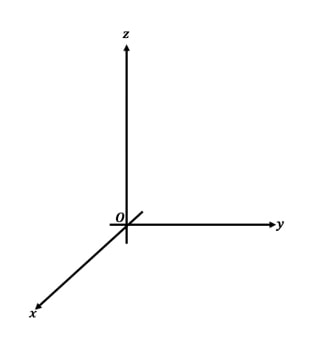
Check Our What does row mean in math?
Identifying Coordinates of a graph with respect to origin
Till now, we have learnt about the placement and the value of origin on a 2 – dimensional and a 3 –dimensional plane. Let us now understand how to identify the values of other coordinates on a graph with respect to the origin.
Let us understand this through an example.
Below we have a graph, where we have two points marked as A and B respectively.
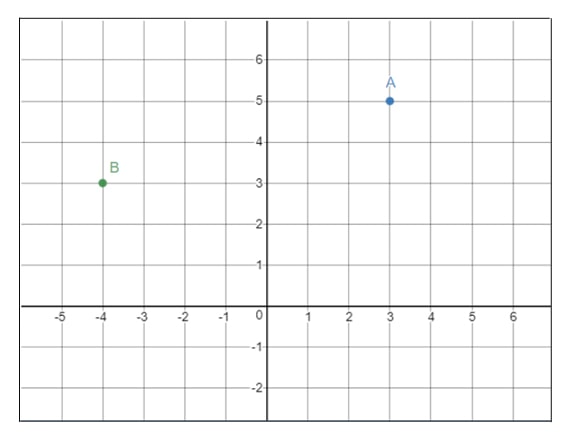
Let us find the values of these two points one by one. But, before this, it is important to understand that to read the x – coordinate on a graph, we need to trace the point on the x-axis that lies either directly above or below the given point. Similarly, to read the y – coordinate on a graph, we need to trace the point on the y – axis that lies either to the left or to the right of the given point.
Now, let us identify both points one by one.
Location of Point A
We can see that the point A lies above the x-axis. Hence, we will look for the point on the x-axis that is directly below point A. This point is 3. So, the x-coordinate of A is 3. Now let us check the y-coordinate. We can see that the point A lies to the right of the y-axis. Hence, we will look for the point on the y-axis that is to the left of the point A. This point is 5. So, the y-coordinate of A is 5. Hence, the coordinates of the point A with respect to the origin are ( 5 , 3 ).
Location of Point B
We can see that the point B lies above the x-axis. Hence, we will look for the point on the x-axis that is directly below the point B. This point is – 4. So, the x-coordinate of B is – 4. Now let us check the y-coordinate. We can see that the point B lies to the left of the y-axis. Hence, we will look for the point on the y-axis that is to the right of the point B. This point is 3. So, the y-coordinate of B is 3. Hence, the coordinates of the point B with respect to the origin are ( -4, 3 ).
Check Our What does slash mean in math?
Plotting Coordinates on a graph with respect to origin
Let us now understand how to plot a point on a graph with respect to the origin. For this purpose, let us take an example. Suppose we want to plot the coordinate ( 1, 4 ) with respect to the origin on the x-y plane with respect to the origin.
We have been given the coordinates ( 1, 4 ). We need to plot it on the x-y plane. The following steps will be followed for plotting the given point on a graph or an x-y plane –
i. Recall that x-axis is represented by the first number in the brackets. We have the point (1, 4 ). This means that the x-coordinate is 1.
ii. Since we have a positive number, therefore, we will move 1 point right on the x-axis from the origin and mark it on the x-axis.
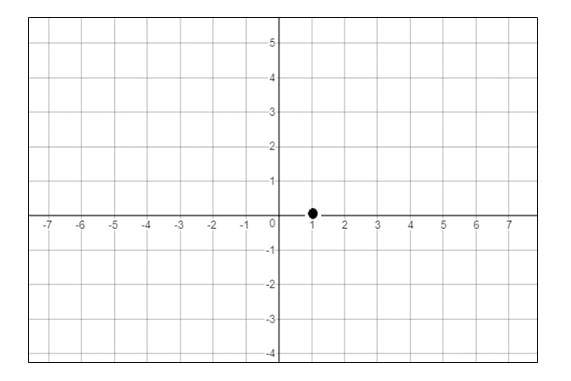
Check Our What does twice mean in math?
iii. Now, we will identify the y-coordinate on the graph. We know that the y-axis is represented by the second number in the brackets. We have the point (1, 4). This means that the y-coordinate is 4.
iv. Since we have a positive number, therefore, we will move 4 points to the above on the y-axis from the origin and mark it on the y-axis.
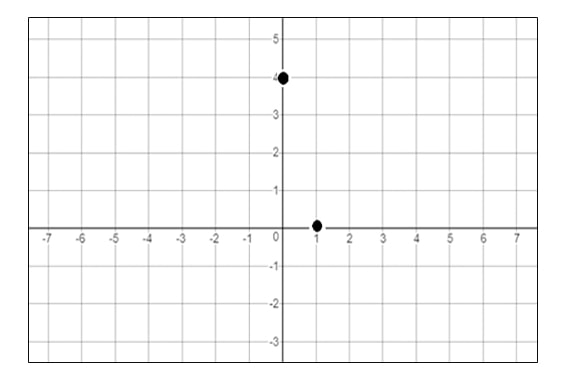
v. Now, we will check for the intersection of these two points on the graph. This point of intersection is the point ( 1, 4 ).
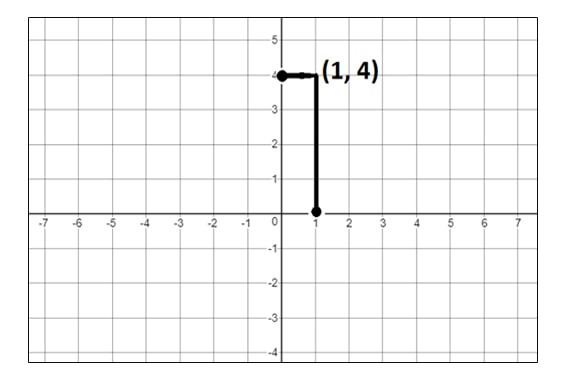
Check Our What does substitute mean in math?
FAQs
Origin in math stands for the point where the two perpendicular lines of the coordinate system, i.e. the x –axis and the y – axis meet.
Origin in math is the intersection of the x-axis and the y – axis.
The origin is represented by the point (0,0) on a graph. It is located at the intersection of both the axis.
The origin on a graph is the point (0, 0)
The x-value is called abscissa. At the origin, its value is 0.
The y-value is called ordinate. At the origin, its value is 0.
In a coordinate plane, the origin lies at the intersection of the x-axis and the y-axis
On a coordinate plane, the positive x-axis lies to the right of the origin while the negative x- axis lies to the left of the origin.
On a coordinate plane, the positive part of the y-axis lies above the origin while the negative part lies below the origin.